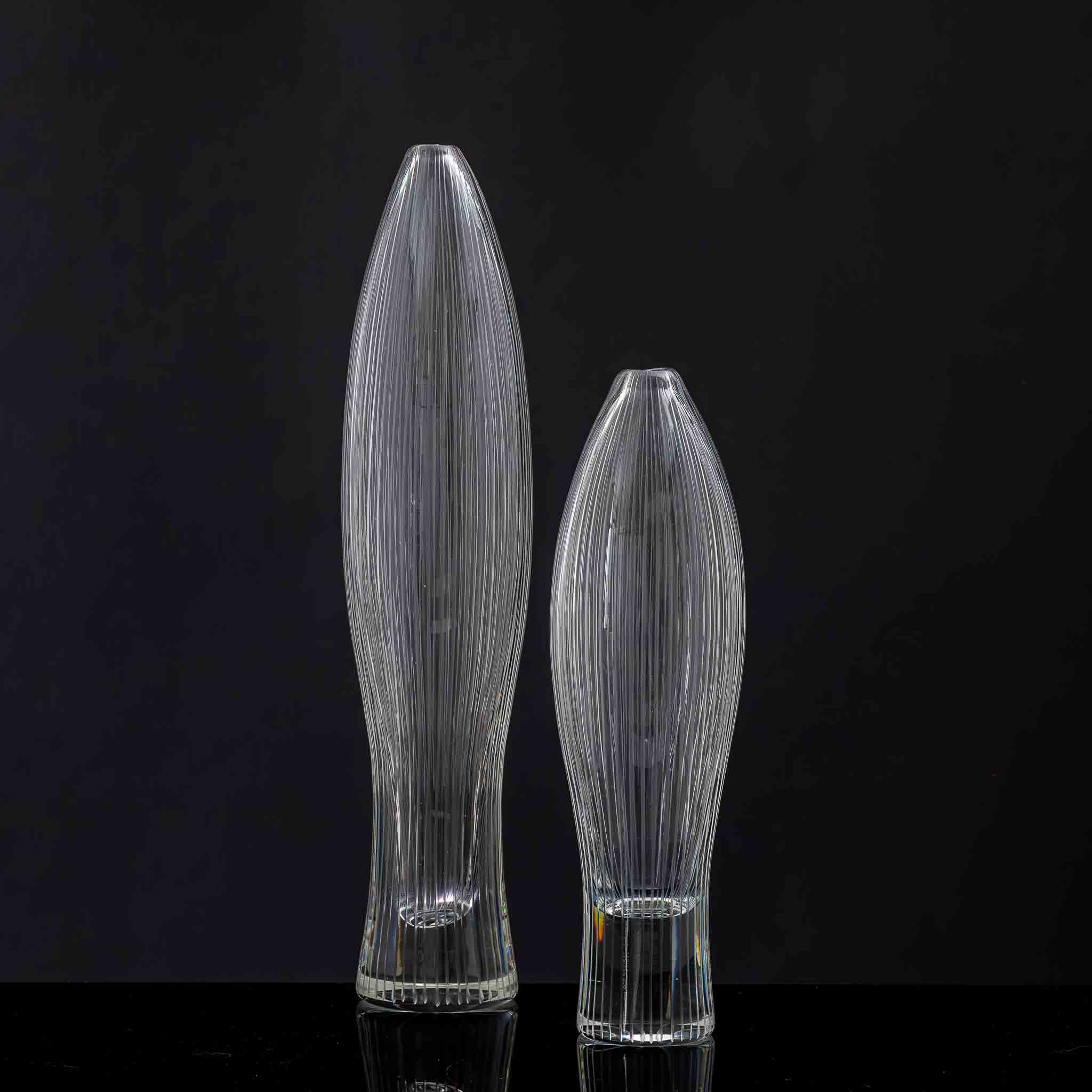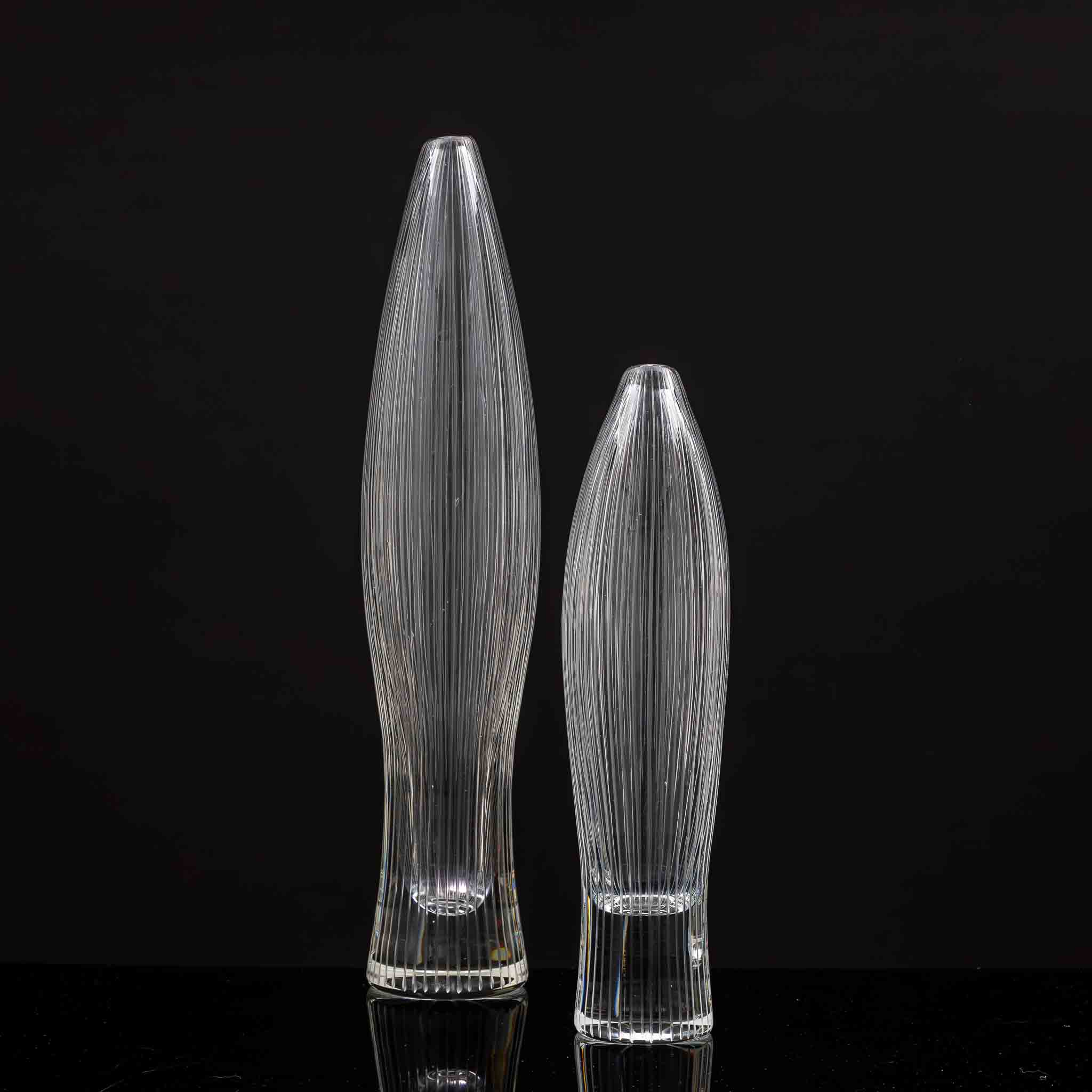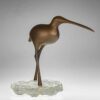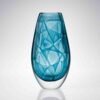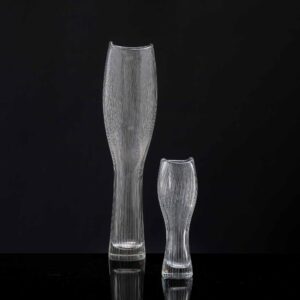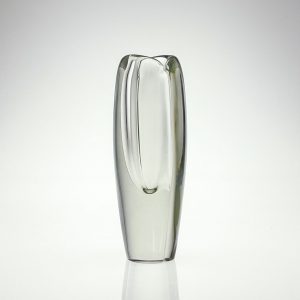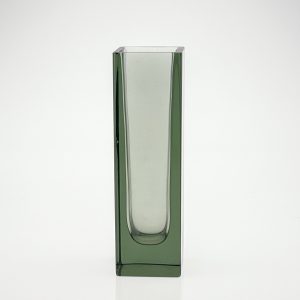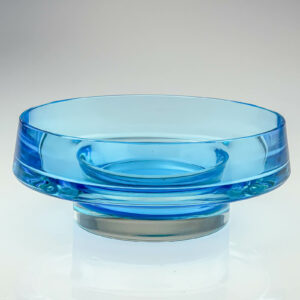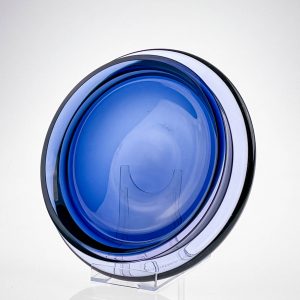| Marked | Tapio Wirkkala Iittala in diamondpen underneath the base. The largest size is also dated '55 (1955) |
|---|---|
| Execution | Iittala, Finland 1954-1955 |
| Condition | These art-objects are in good vintage condition, some scratches underneath the base consistent with age and use. Minor stains, small airbubbles and a minute inclusion in the smallest vase. No chips or cracks. |
| Literature | Marianne Aav, Tapio Wirkkala eye, hand and thought: p. 304 |
| Dimensions | Largest size Smallest size |
Tapio Wirkkala – A rare set of both sizes crystal Art-object, model 3561 – Iittala, Finland circa 1955
€3,375.00
Beschikbaarheid: 1 op voorraad
Two turned mold-blown crystal Art-object with vertical cut lines. These Art-objects are model 3561 in the oeuvre of Tapio Wirkkala. It was designed in 1954 and handmade by the craftsmen at the Iittala glassworks in Finland in 1954 or 1955.
The inspiration for this model – like most of Wirkkala’s designs – came from Nature. Like the “Cantharel” and “Boletus” – designed by Wirkkala in the same period – this model resembles a wild mushroom.
These art-objects were made in two sizes and only for a very short time: from 1954-1955. This therefor being a rare complete set of both sizes. They are signed in diamondpen underneath the base: Tapio Wirkkala – Iittala. The largest one is also dated (1955).
About Tapio Wirkkala
Tapio Wirkkala (1915 Hanko, Finland – 1985 Helsinki, Finland) A giant of Finnish design, Wirkkala was an artist of great diversity for whom no material was alien and who left no area of design unexplored.
A glass design competition held by the Iittala glassworks in 1946 was the event that set his career in motion; the first prize went jointly to Wirkkala and Kaj Franck.
With an oeuvre that ranges from exceptionally beautiful pieces of glass art to industrial design in the form of beer bottles and banknotes, Wirkkala also designed jewellery, sculptures, and furniture.
The recipient of many awards, honorary titles, and a doctorate, Wirkkala won three Grand Prix medals at the Milan Triennale in 1954 and an additional Grand Prix medal and gold medal at the Milan Triennale in 1960.


